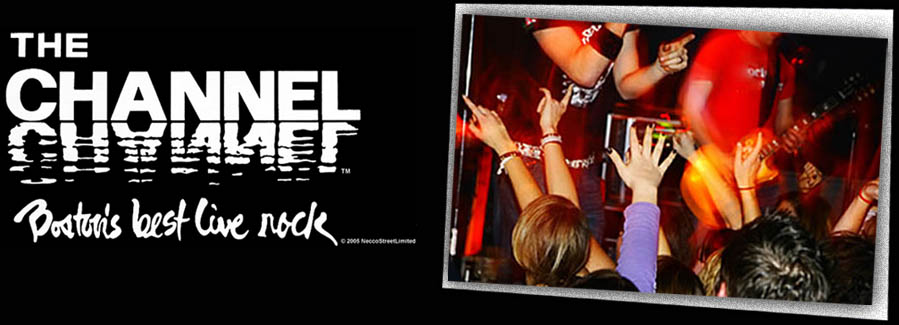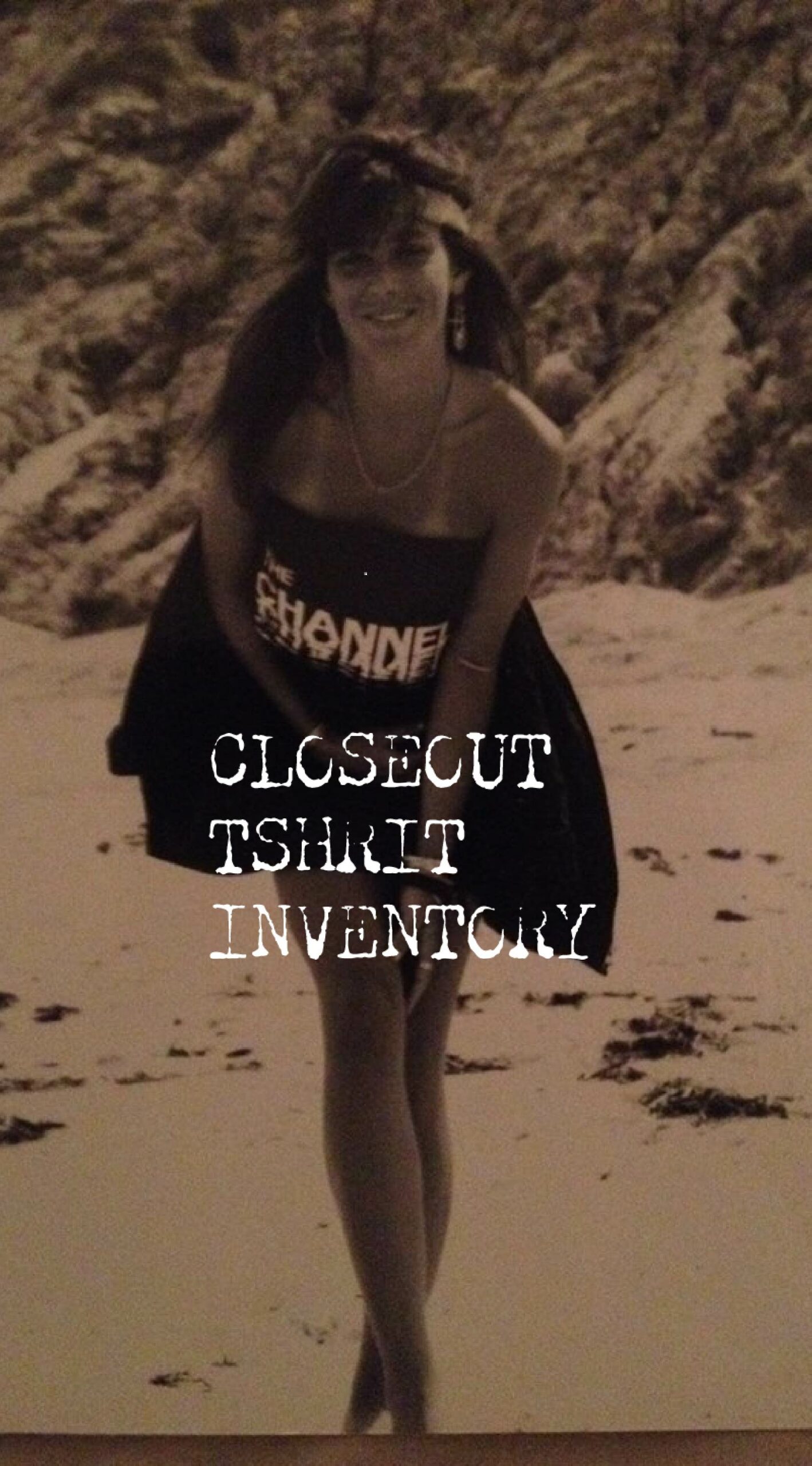History of the Channel Club, Boston.
The Channel Club was founded in 1980, the name because the club sat at the edge of the Fort Point Channel, which separates South Boston from the Financial District. The club was originally on the other side of the channel and a little South of where the Boston Tea Party took place (old Griffin’s Wharf) in 1773.
The Channel had a legal capacity of 1,700, although management often oversold the venue for major acts. Upon entering the club, patrons faced a large raised wooden corral that provided a view of the stage from the far end. The look of the venue was that of the classic roadhouse. The 4′ high stage faced a 20′ square sunken dance floor, nicknamed “the pit”, which was surrounded by drink rails and tables with padded stools. For punk rock and metal shows, the management locked the furniture away. When the bands were playing and the crowd was jumping, the entire wooden floor often bounced up and down, causing the 15′ high PA system, to sway precariously back and forth.
The Channel started out booking new wave bands such as Human Sexual Response, Jon Butcher Axis, and The Cars. During the early and mid-80s heyday of hardcore and punk, bands like Hüsker Dü, Black Flag, Dead Kennedys and Minor Threat were headline acts. Later, local bands such as The Pixies played alongside major touring acts such as Big Audio Dynamite, Los Lobos, The Damned, and Einstürzende Neubauten.
The Channel was booked by Warren Scott from 1980 to 1990, and was not limited to punk/metal bands. The Godfather of Soul, James Brown played there, as did jazz legend Ornette Coleman. Classic shows of note have included Jerry Lee Lewis, Gregg Allman, Eric Burdon, Meat Loaf, The Go-Go’s, The B-52’s , The Charlie Watts Big Band and Steppenwolf. Live radio station broadcasts also packed in large crowds. Often, the Channel became the first or last stop for many major tours.
The club also regularly booked reggae shows featuring acts such as Yellowman, Dennis Brown, Steel Pulse, Toots & the Maytals, Burning Spear, and Black Uhuru. Blues greats B.B. King, John Lee Hooker, Charlie Musselwhite, James Cotton, Junior Wells and Buddy Guy.
In the clubs final full year,1991, in an attempt to revive the club’s failing financial situation, Tony Raine returned as talent buyer and the club presented notable shows from The Gypsy Kings, Brian Setzer, and BB King featuring “Smokin Joe “ Bonamassa who would headline the club in November 1991.
Marky Mark and The Funky Bunch appeared for two afternoons that summer as did The Damned, Crowded House, The Tragically Hip, Live and also the premiere show of Morphine in Necco Place then known as Vertigo.
The Sound System
In the mid to late 1980s, the club was in its prime. Local up and coming Boston bands relished the opportunity to make it to this stage and plug in. The wall of sound was provided by the soundman Dinky Dawson. He had settled in Boston from his native England, where he had made a name for himself in the 60’s and 70’s from his road work with bands like Fleetwood Mac, The Byrds, The Kinks to name but a few. Many of these old acquaintances like Mick Fleetwood or John McVie were seen milling about The Channel visiting with Dinky on the occasion that they were in Boston. The sound system that Dinky owned and brought with him to The Channel was rumored to include the same sound cabinets that first blasted Manfred Mann’s “Doo Wa Diddy” in a recording studio back in London in 1964. Dinky’s colorful past is well documented in the book Life on the Road published by Billboard Books in 1998.
House DJ’s and Local Radio
The club’s first official full-time DJ was Carter Alan. Carter was a popular DJ at Boston’s WBCN when the club first opened. Carter works at WZLX in Boston today. Many other WBCN DJ’s worked as fill in jocks like Albert O, Tami Heide, Bradley Jay (DJ), and Peter Choyce. Debbie Southwood-Smith, Mike Idlis and Mod Todd (Todd Nichols/WGIR-FM) ushered in the mid to late eighties era along with BCN’s Metal Mike, DJ “Black Starliner” and Jim Mitchell. Also included in this category of Channel deejays are Carmelita (WBCN, WAAF) and Janet Planet (circa 1983-1987), who also worked the Nu Musik Nights, Shred (WERS, WBCN) and Hugh Munoz (1980-1983), creator of Metrowave on WERS.
The Facility
In addition to a dozen bar stations (the Channel bartenders were some of the best in the city), the club had a concession stand that sold hot dogs, candy, soda, and popcorn, as well as official club merchandise (t-shirts, jackets, sweatpants, etc.). Directly behind that was a semi-private game room with a half dozen video games.
There was also a back bar area that had the ability to be closed off during all-ages shows by lowering metal grates over the window openings. All ingress/egress was restricted to a single door that was manned by a bouncer who checked for hand stamps to allow the over 21 crowd to enter for a drink, as well as prevent them from bringing alcoholic beverages out into the rest of the club with the underage crowd.
To the rear of the back bar area was yet another, smaller room that was usually closed off on nights when the club wasn’t sold out. This was known as the VIP room, and regularly played host to artists like Jimmy Page, U2 and Aerosmith when they were in town and wanted a private place to sit with friends and have a few drinks.
Depending on who was playing, the pit would become a mass of sweaty skinheads, punks, metalheads, goth kids and the occasional hippie slamming into each other. In the late 80’s, shows would be stopped because kids were getting too violent. The bouncers had a notorious reputation of brutality, and there certainly were a number of incidents where this was the case.

